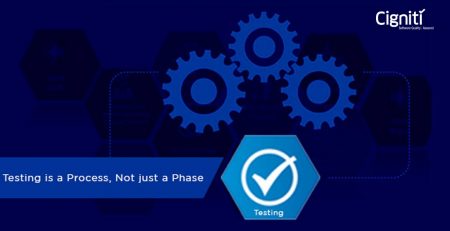Beware of the Bots in the Process of Digital Transformation
Did you actually think that Bots are smart?
If so, you are wrong. They are super smart and could be maliciously intelligent at times as well. Bots can be fascinating as well as frustrating, depending on their application in the concerned business realm. They can be an enabling factor on the consumer side, and can answer some deep-rooted queries on the business front as well. Bots are being increasingly used in applications to make them more smart and receptive to growing consumer demands. But then, how safe are they, or this question never occurred to you?
There are some bots that are built only to scrape, steal, and put some key business processes to a standstill. Studies suggest that, today, Bots are commanding majority of the traffic on the internet. Tracking companies and research firms have estimated that almost 52% of the internet traffic today is non-human, where 29% of the website traffic comes from malicious bots, and about 41% of malicious bots enter a website network posing as humans. Now this can be scary!
[Tweet “DYK 52% of the internet traffic today is non-human, where 29% of the website traffic comes from malicious bots, and about 41% of malicious bots enter a website network posing as humans”]
This definitely doesn’t seem to be good news for businesses that are getting increasingly inclined towards digital transformation. Bots are being used for various tricky activities. They can be very well compared to the Auto-bots, the blue-eyed saviours of the human race and the Decepticons, the red-eyed monsters who will bring havoc for the humans. It could be in the form of sudden spikes in traffic on the websites or an unexpected downtime, generating performance issues or enabling a data breach. It can take any form and leave a nasty surprise for you.
Why you need to build mechanisms to safeguard from bad bots?
When Bots attack applications on-premises, they can enable outages and hike up the costs related to the application’s development and maintenance. For instance, many applications are being deployed on licensed platform and whenever a new instance gets recorded, it further incurs costs. These costs could also be associated with the bandwidth. Bots can even attack in a Cloud set-up, where the costs associated with the bandwidth could soar up.
The truth of the matter is, bots are going to be ruling the application development scene in the near future. Hence, enterprises need to build mechanisms to save themselves from these trouble-makers. It can cost businesses a great deal of monetary as well as reputation loss, despite the bright results delivered by various Digital Transformation initiatives.
Knowing that the situation might get scarier, there is a need to build robust mechanisms to ensure that your applications are safeguarded against the growing number of bots in the digital orbit. Security testing, quality assurance, test automation, Penetration Testing, Vulnerability Assessment, or Regression Testing; there is a lot that can be recommended to devise a relevant approach for this. However, in such cases the approach has to be focussed.
The core idea is how to protect your business-critical applications against the intrusion of malicious bots.
Focus on assessing the Vulnerabilities and look inwards
Vulnerability Assessment is mainly implemented to define, identify, and segment the security loopholes (vulnerabilities) in a computer, network, or communications infrastructure. It is a risk management approach that enables organizations to prioritize expected vulnerabilities or any threats within an application. This is a must-do analysis to understand where the gaps are and accordingly plan the next steps and strategies.
To summarize, some of the key highlights of Vulnerability Assessment are: it helps you to detect programming errors that can result in cyber-attacks, provides a systematic approach for risk management, and secures the IT networks from internal as well as external attacks. Additionally, it helps you garner higher RoI on IT security investments over a period of time. On the whole, this implies that VA helps to bring down the chances of any external attacks.
[Tweet “Key steps to build robust applications to deal with bad bots? #VulnerabilityAssessment”]
Scan your application’s profile
What does a profile imply? It refers to collection of good amount of comprehensive datasets from the application that would represent the overall application – URLs, libraries, value of cookies, categories of uploads, etc. This helps you create the baseline, and obstructs anything that comes from outside the baseline, tagging it as a threat or an attack to block it.
Restrict your exposure
It can work effectively if you limit your exposure by pulling down any expected attacks via processes such as GeoIP fencing. In this way, traffic coming on specific geographies can be obstructed apart from the one coming specifically from the customer base. You can even define routes and workflows to prevent automated bot attacks from accessing URLs or executing aggressive attacks.
Erase every input & Encrypt Cookies
Assume that any kind of data coming from any source should be treated as unclean and malicious. In order to avoid any unforeseen hassles, it is important that you eliminate anything that seems like program logic or comes across as a probing factor. The cleaning could be complex and might need searching and eliminating specific characters that could result in vulnerabilities. A strong firewall policy can help in this case. With an alternate attempt you can even encrypt all cookies. Cookies were introduced to be reliable for websites and collect relevant information. However, it can cause issues if a bot decides to go on to the website server and intrude into the information collected. When you encrypt the contents in the cookies, there is an assurance that only the application can read the contents of the cookies.
In Conclusion
Bots can be absolutely effective to support customer communication and enable enterprises to get more and more efficient by automating certain processes. However, knowing their capabilities, the stakes are very high. It is inevitable for enterprises to build a good security testing and QA strategy to safeguard their applications from any kind of attacks that could be triggered by a bot.
Cigniti offers end-to-end security testing services including Network Penetration Testing, SCADA Network Vulnerability Assessment and Penetration Testing, Web Application Penetration Testing, Wireless Network Assessment and Penetration Testing. Connect with us to leverage the expertise of over 100 security testing professionals who hold certifications such as Certified Ethical Hacker (CEH) and Certified Security Analyst (CSA).





Leave a Reply